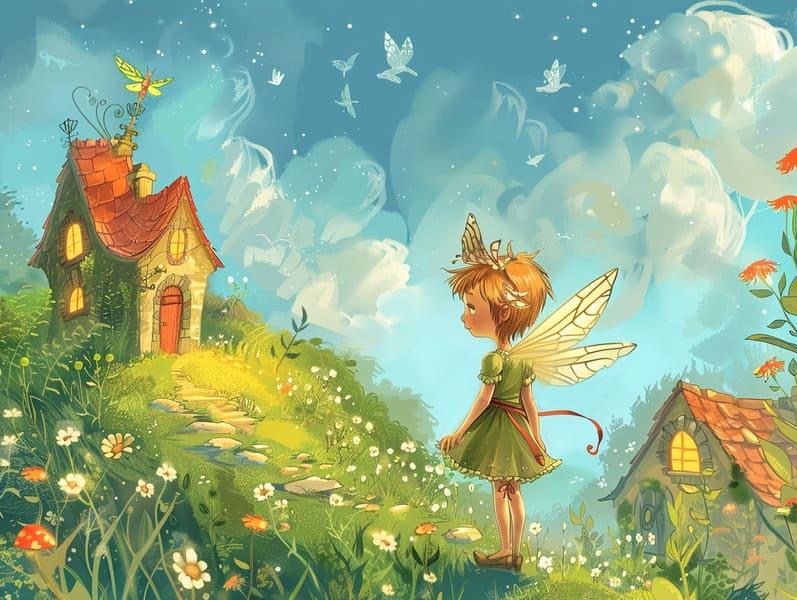The Start of Bedtime Fairy Tales and Its Timeless Elegance.
The Start of Bedtime Fairy Tales and Its Timeless Elegance.
Blog Article

Classic fairy tales have legendary status. These narratives have been conveyed from one generation to the next millennia before they were ever written down. They emerged from a variety of traditions, including American traditions. They were initially disseminated among elders, often carrying themes and messages relevant to the societal norms and beliefs of the time.
Jacob and Wilhelm Grimm, the two Grimm brothers, were among the first to gather and publish many of these beloved fairy tales. Their anthology, "Grimm's Children's Stories," included tales like "Ashenputtel," "The Story of Hansel and Gretel," and "Snow-White and Rose-Red," which have since become staples in the world of children's fairy tales. Similarly, Hans Andersen's delightful tales, such as "The Mermaid's Tale," and "The Little Duckling," have touched hearts worldwide, securing their place in the pantheon of classic fairy tales.
Even though they are old, traditional fairy tales remain as relevant as ever, especially as children's night stories. These delightful tales are now available in many formats, including beautifully illustrated books, captivating animations, and digital fairy tales.
Their continued relevance can be linked to several delightful features:
Important Morals: Ancient fairy tales often teach important moral lessons. Tales like "The Tale of the Boy Who Cried Wolf" teach the significance of integrity, while "The Hare and the Tortoise" stress the benefits of steadfastness and humility. These stories offer little ones clear distinctions between moral and immoral, shaping their moral compass in a subtle yet impactful way.
Sympathy and Perception: Ancient fairy tales frequently feature personalities facing tests and troubles, provoking listeners to empathize with their struggles and celebrate their triumphs. For instance, "Beauty and Her Beast" conveys the importance of looking past the exterior to comprehend the inner core of a character, nurturing tenderness and insight.
Cultural Perception: Many traditional fairy tales are rich in the cultural contexts from which they grew. Immersing in these fairy tales can provide delightful insights into different heritages, cultivating a sense of cultural respect and perception.
Creativity and Imagination: The fantasy-filled elements in fairy tales—talking beasts—motivate children’s creative thoughts. These narratives bring readers to supernatural realms, invigorating imaginative ideas and a sense of wonder that endures a lifetime.
Timeless fairy tales are not only whimsical but also informative. They function as delightful tools in building various brain and heart skills in young ones. When old fairy tales are recited, they advance speech development by introducing new word meanings and complicated sentence structures. This practice also fosters auditory perception and attentiveness, as the young hang on every word, ready to see what happens next.
Furthermore, contemplating the themes and characters of old fairy tales can cultivate reasoning skills and intellectual skills. Little ones learn to spot patterns, guess what will happen, and comprehend cause and effect. These analyses also promote kids voice their thoughts and feelings, cultivating their emotional intelligence.
In today’s technological age, the prevalence of free fairy tales online has made these fairy tales more available than ever. Online platforms and programs offer vast collections of traditional fairy tales that can be looked at or played anytime, anywhere. Fairy tales read aloud are particularly well-liked, giving an enjoyable way for the young to be a part of these delightful tales. Audio stories and read-out-loud videos carry characters and settings to life, often complemented by magical harmonies and music that elevate the storytelling journey.
The lasting allure of ancient fairy tales lies in their ability to shift to modern society while retaining their key morals. Contemporary updates of these fairy tales often present more different characters and modern settings, making them understandable to today’s audience. However, the fundamental themes of guts, kindness, and even-handedness remain unchanged, continuing to touch young readers of all ages.
Traditional fairy tales also offer a sense of solace and homeliness. They afford a neat narrative with a definite beginning, middle, and end, often wrapping up with the finalization of conflicts and the triumph of good over evil. This regularity can be solacing for the young, distributing a sense of assuredness in an constantly changing world.
Ancient fairy tales continue to entrance and instruct new generations, maintaining their allure and importance in modern society. As nighttime stories for kids, they introduce a perfect blend of wonder and wisdom, aiding moral values, empathy, and creativity. The proliferation of internet fairy tales and the likability of fairy tales read aloud warrant that these timeless fairy tales remain acquirable to new generations.
By safeguarding and communicating these narratives, we continue to treasure the rich tapestry of tradition and cultural heritage. Whether you are exploring a colorful picture book, delving into a digital library, or listening on an narrated book, the magic of children's fairy tales is always within reach. These tales reveal of the unending effect of fairy tales and its ability to bond us across generations and more info cultures.
If you are seeing a richly illustrated book, viewing a electronic library, or playing an narrated book, the captivation of Grimm's fairy tales is always within reach.
These fairy tales emphasize of the ageless force of narratives and its ability to draw us together across epochs and places, casting a charm that delights and instructs alike.